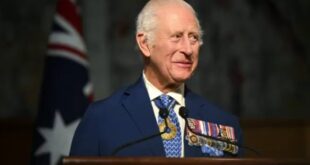Market Report by Susannah Streeter, Head of Money and Markets at Hargreaves Lansdown.
The extent to which price pressures are still weighing on the American economy is in sharp focus today, with investors watching and waiting for the latest inflation snapshot.
This is a big piece of the puzzle for central bank policymakers and will help them decide on whether to press pause on rate hikes in June.
If headline CPI comes in, as expected, around 5% and core prices, stripping out volatile food and energy, drop slightly back, it will indicate that monetary policy has been wound tight enough to keep prices cranking down.
There will still be worries that due to the lag effect, aggressive rate hikes might still bring stronger-than-expected disinflationary shockwaves in the months to come, which could push the US into a deeper downturn.
This is being reflected in oil prices with Brent Crude dropping back below $77 a barrel, as traders assess the potential knock-on effects of a US recession on global demand.
Nerves are still frayed about the banking crisis and the extent to which fresh problems are lurking at regional US banks.
Now fresh debt ceiling concerns are piling up with nervousness that the lack of an agreement in raising the US borrowing limit, could set off fresh shocks for the global economy.
Although politicians seem in agreement that a deal must be done, there still appears to be a significant gulf between what Republicans and Democrats will accept.
Talks are continuing but the next three weeks are set to be highly fraught as the June deadline looms and could lead to some turbulent trading.
Already the uncertainty has meant that borrowing costs for US taxpayers have risen due to the high yields demanded for short-dated Treasury Bills in recent auctions of US debt.
The big worry is that if lawmakers do not crawl back from the precipice and America defaults, stresses in financial markets could turn into a seismic shock.
The curtain is set to rise tomorrow on another interest rate hike from the Bank of England, with high costs still scorching consumers amid worries the price spiral still risks becoming embedded in the economy.
The stage is set for a 0.25% rise, particularly given that was the move chosen by both the Federal Reserve and the European Central Bank last week.
ASOS has made a disappointing return to the results catwalk today, after cash-strapped fashion fans curtailed spending.
It posted a first-half loss of £87.4 million in the six months to February, compared to a profit of £14.8 million in the same period last year. The retailer has badly stumbled amid the cost-of-living crisis, tripping off the pandemic highs it reached when e-commerce became the queen of shopping during Covid.
With fashion fans ditching makeshift bedroom changing rooms to go out and browse in real stores right now, while others cut down on unnecessary purchases amid mounting bills, it’s been a super-tough time.
Conditions have improved a bit with delivery challenges being overcome now that Royal Mail has reached an agreement in principle with unions.
ASOS has also been taking steps to trim costs by cutting excess stock levels, winding down storage facilities and reducing headcount and investors will be reassured a little given management’s confidence that the company will see a return to profit in the second half of the year.
However, it seems ASOS is still going through a painful period of adjustment, and it will really need to see inflation subside, particularly for essentials like food, before its core customers will return to splashing the cash
Even then it’ll have a fight on its hands, given how competitive it is in the fast fashion space, with rivals Primark on the high street and Shein online proving such formidable opponents.
A battle for the soul of John Lewis is underway and the latest skirmish will play out today with the boss Dame Sharon White facing a vote of confidence in her leadership.
Although partners are clearly unhappy at losing yet another annual bonus this year as steep losses have mounted up, anger is fermenting over a proposal to change the partnership model to attract some investment.
There is deep unhappiness at the direction of travel John Lewis is marching given that so much pride and customer loyalty has been pinned on the partnership model.
The extent of internal displeasure with the leadership will become clear at the bi-annual meeting where staff-elected councillors will vote.
Although it’s non-binding, a revolt may kick the prospect of tweaks to the partnership model deep into the long grass.
It will also intensify the pressure on management to accelerate other avenues of cutting costs and repairing its finances such as job losses and estate selloffs.
Source link


